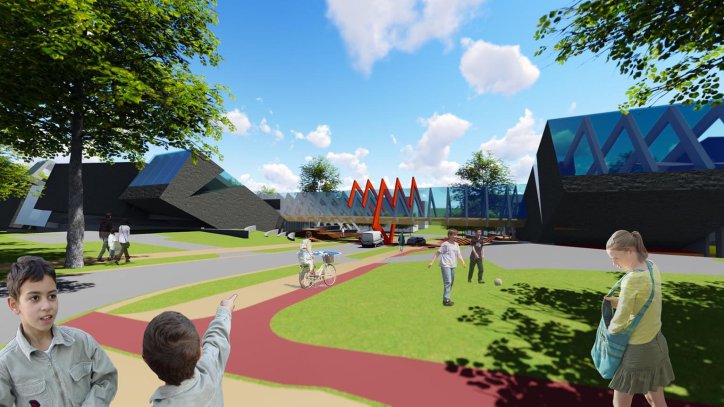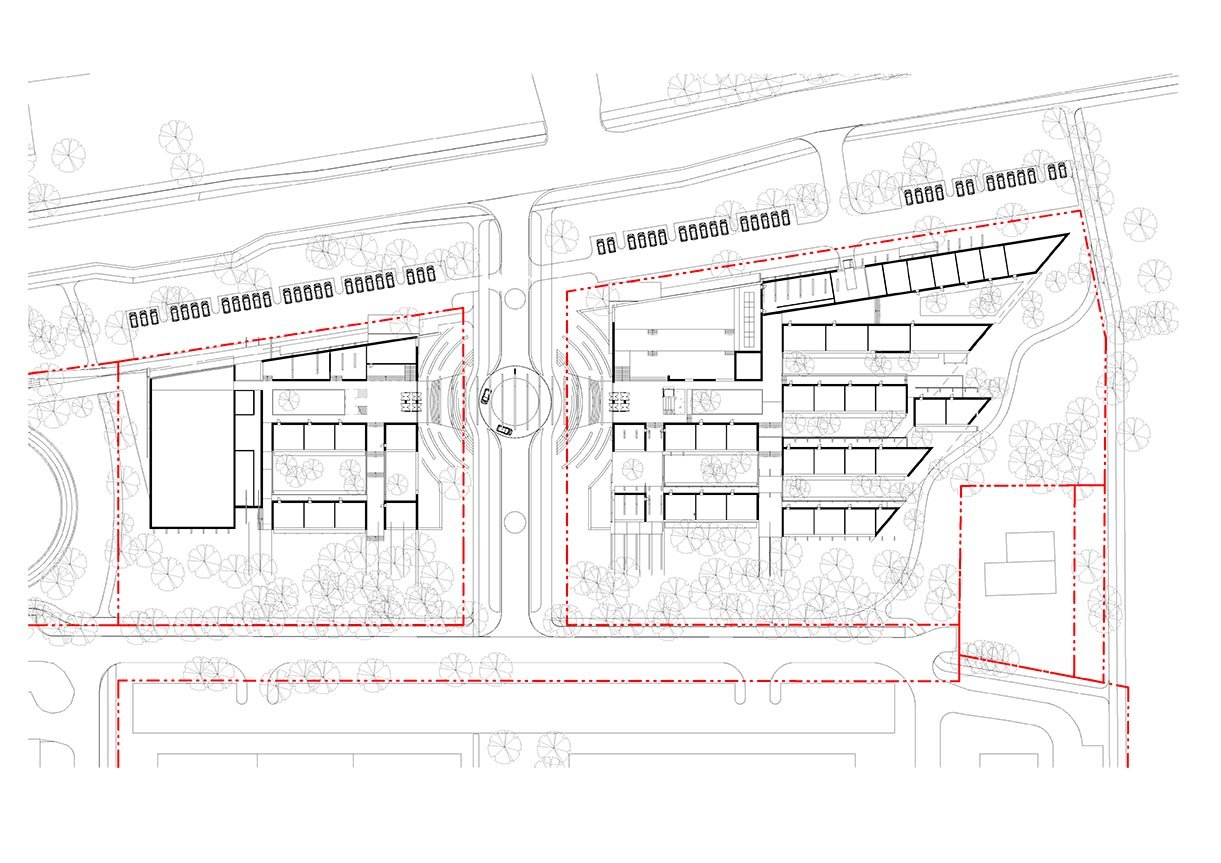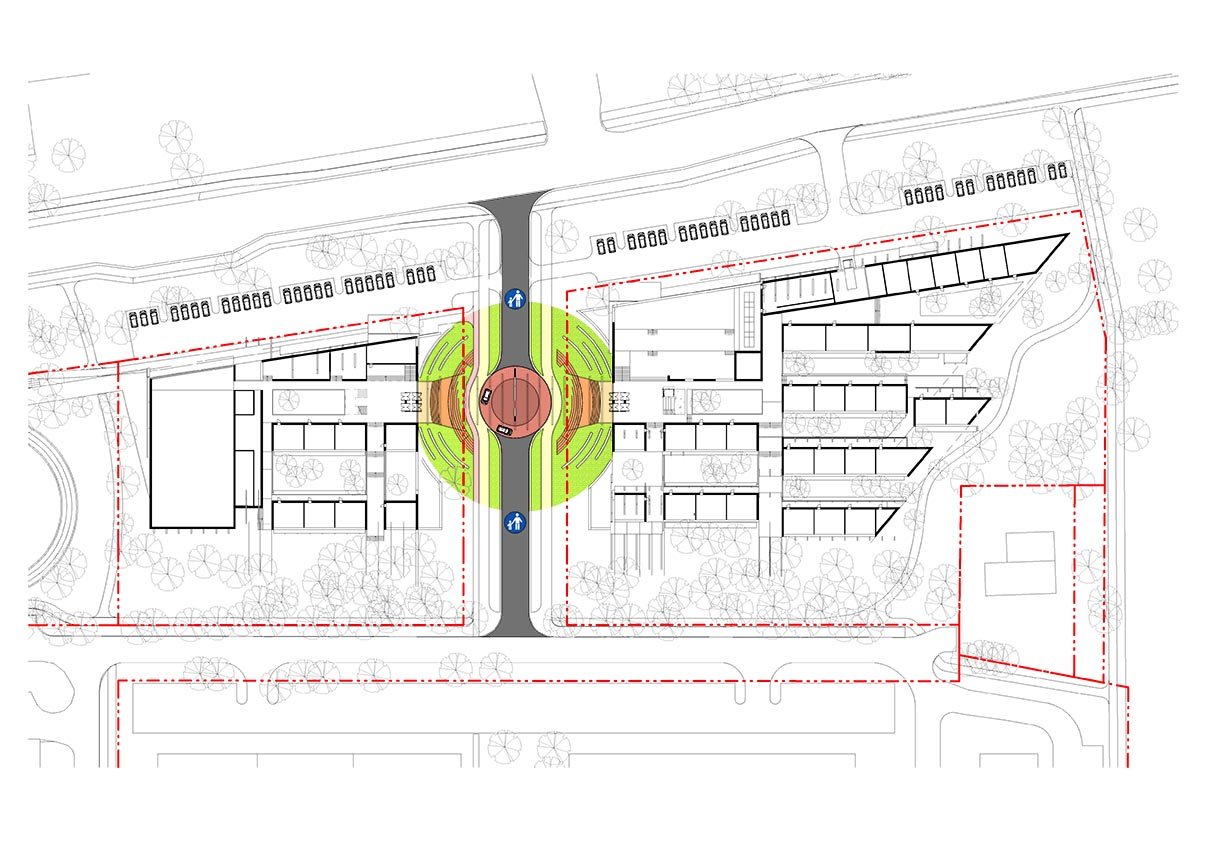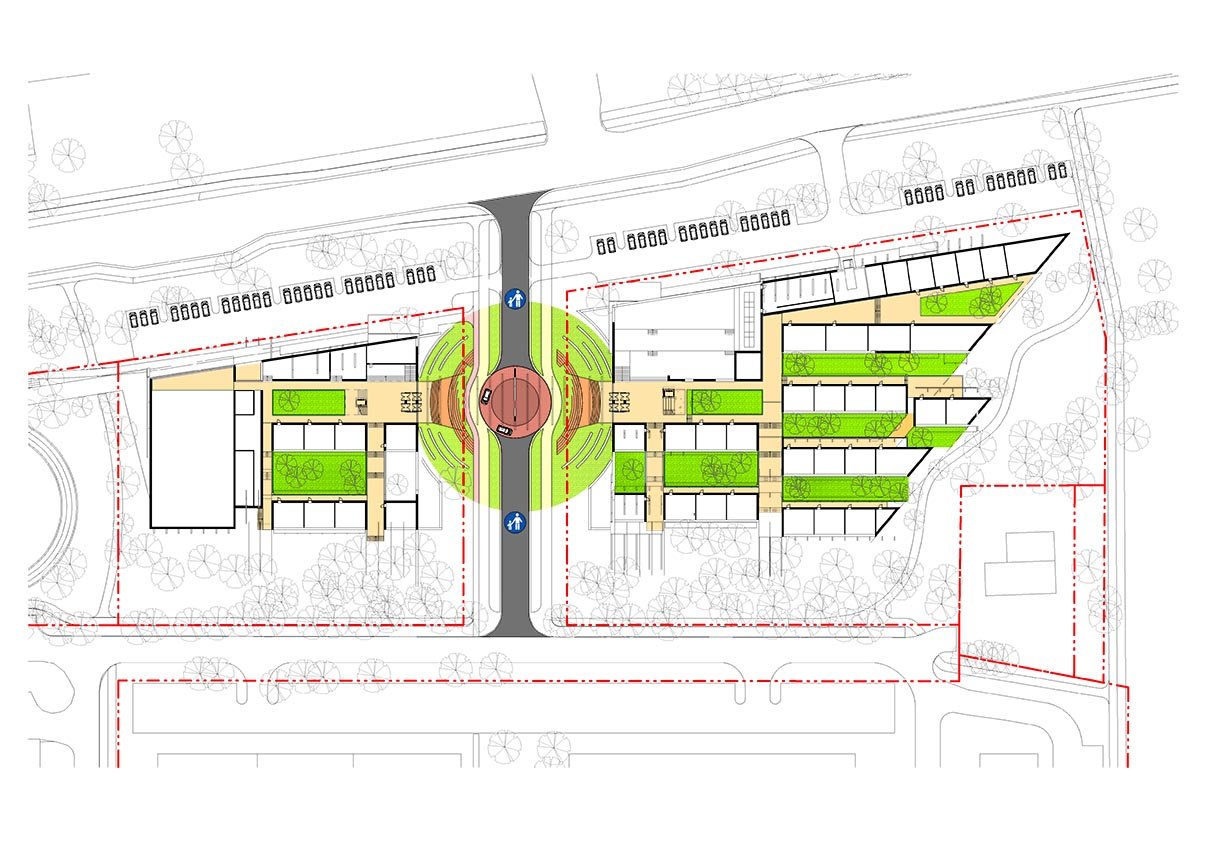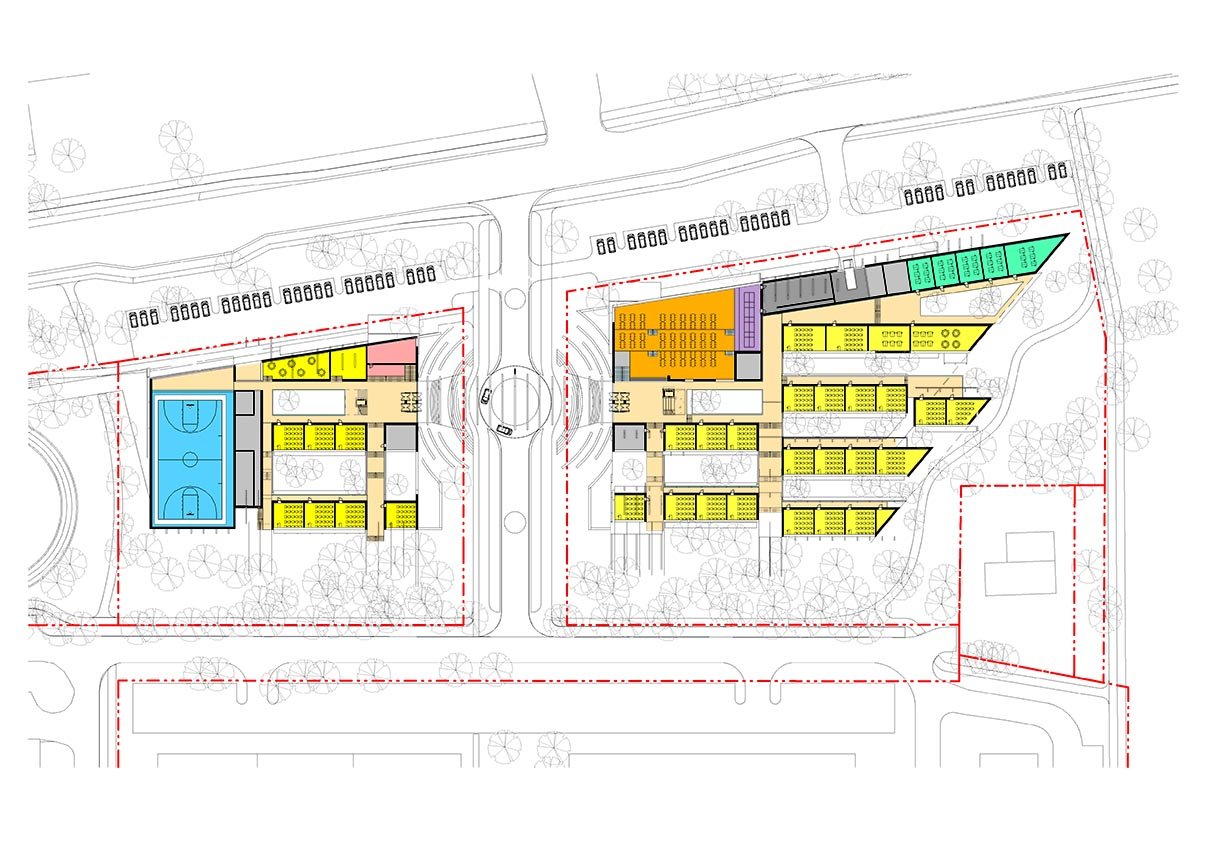SenvagÄ—s st. 4-6, KlaipÄ—da
Architectural competition, 2nd place
Facts.
– During the 25 years of independence, only one new school was built in Lithuania.
– Policy makers carry out a reform of education for 25 years, but there is no positive change.
Questions.
– Children spend a half a day, five days a week at school – how to make that time pleasant?
– How the school should be? Where should we put priorities?
– How to make kids want to be at school? What should it be?
The building is not a value in itself, but it encodes a relationship between people, ties to nature, traditions. It becomes a “home” you do not want to leave and come after lessons. Undoubtedly, architectural measures will not be enough, but the environment can spur changes in people’s minds and importantly the client’s. The architect alone can not create everything, but he can make a start – sow the seed. Whether it will grow up and give fruit, depends on the work of many professionals. But the most important is the desire to start thinking differently.
Dogmas. The schools built up till now in Lithuania are basically the 20th century Soviet heritage. The goal of this Soviet schooling was mass training where knowledge is forced by dumb repetition for a mass 800-1500 children. Zombie schooling. Aggression, violence, harmful habits – are becoming more and more common in today’s school’s everyday life. Fencing the territories of schools, recruitment of security firms are attempts to solve problems. But are there any other measures for the 21st century? Paradoxically, the richer societies (like the US) are, the more problems schools have, the more acute and painful they are.
What to do? How should it be? What is a school? What should it become?
The school as an ideal world. In many cultures, it is common for people to bind their lives to science and wisdom, to restrain themselves and travel to live in a closed community, an independent world. Life in cognition and wisdom. Today, a school model that follows a clearly defined form of ideal life, is no longer common. The main point of today’s pedagogy is the attitude that children and young people have to develop themselves, discover and realize their opportunities, and therefore they should not be treated, but accompanied.
School as a community center. As is known, the nearby Žolynų street community is one of the most active in Klaipėda. However, this community does not have any social infrastructure. State assets (school buildings) are used less than 30% per day and even less per year. Therefore school premises and sports fields can be used for community needs in the evenings. School design and premises (dining room, library, gym, running tracks, stadium, sports grounds) are adapted to operate in different time modes. This would create stronger social relationships, social integration, and sustainability of investment. The professional and lively experience of living elderly residents can be handed over to the younger generation. Mutual socialization and economic benefits.
Our proposed school is dedicated to the development of a child’s individuality. The building is designed in a small and cozy scale: 1-2 floors carefully integrated into existing natural environment: tree grove on a slope. The use of relief allows unique and individual inner spaces. Classes include small inner courtyards, of which every classroom will have a duty to take care of, thus learning how to care for and manage their personal environment. The venue is designed at the center of the complex, which is the main school square for larger gatherings, as well as day-to-day meetings and good-byes – “KISS & RIDE”.
The school as an ideal world. In many cultures, it is common for people to bind their lives to science and wisdom, to restrain themselves and travel to live in a closed community, an independent world. Life in cognition and wisdom. Today, a school model that follows a clearly defined form of ideal life, is no longer common. The main point of today’s pedagogy is the attitude that children and young people have to develop themselves, discover and realize their opportunities, and therefore they should not be treated, but accompanied.
School as a community center. As is known, the nearby Žolynų street community is one of the most active in Klaipėda. However, this community does not have any social infrastructure. State assets (school buildings) are used less than 30% per day and even less per year. Therefore school premises and sports fields can be used for community needs in the evenings. School design and premises (dining room, library, gym, running tracks, stadium, sports grounds) are adapted to operate in different time modes. This would create stronger social relationships, social integration, and sustainability of investment. The professional and lively experience of living elderly residents can be handed over to the younger generation. Mutual socialization and economic benefits.
Our proposed school is dedicated to the development of a child’s individuality. The building is designed in a small and cozy scale: 1-2 floors carefully integrated into existing natural environment: tree grove on a slope. The use of relief allows unique and individual inner spaces. Classes include small inner courtyards, of which every classroom will have a duty to take care of, thus learning how to care for and manage their personal environment. The venue is designed at the center of the complex, which is the main school square for larger gatherings, as well as day-to-day meetings and good-byes – “KISS & RIDE”.

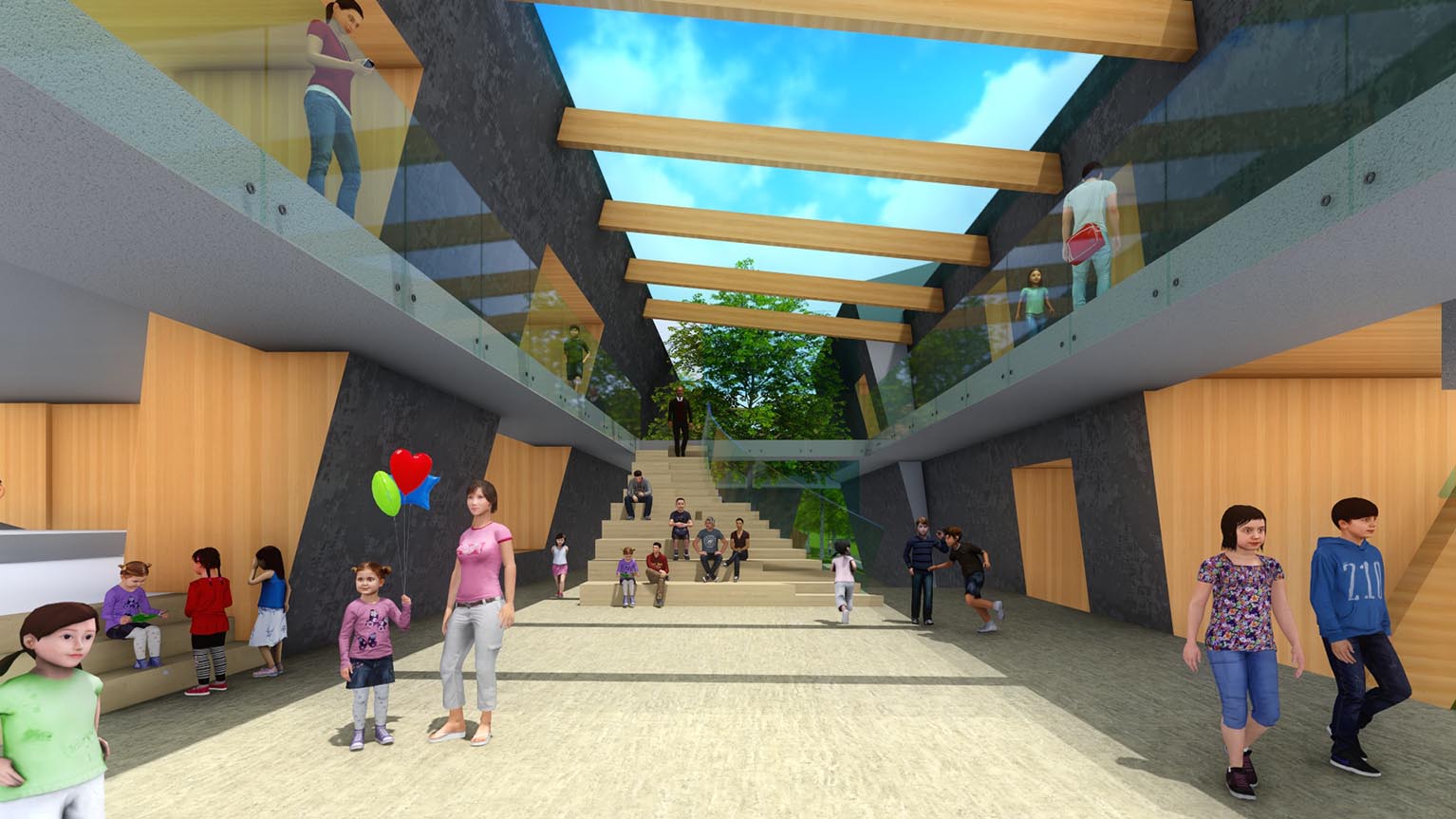
Creating new connections. The technology center is designed on the north side of the plot to allow relashionships with KlaipÄ—da’s University Botanic Garden. Since the early years, the pursuit of progress (moving up) is being implemented by integrating and demonstrating the activities of the University. Also a new outdoor class “Sala” is proposed on one of the islands of the river DangÄ—: an outdoor biology lab, which will present an immediate knowledge of aquatic flora and fauna for the children.
The principles of sustainable mobility, healthy city, healthy home – the use of site factor – slope, mountain, stairs – movement, exercise, climbing up the terrain – perspective, career, cognition (internal communication spaces of the school).

